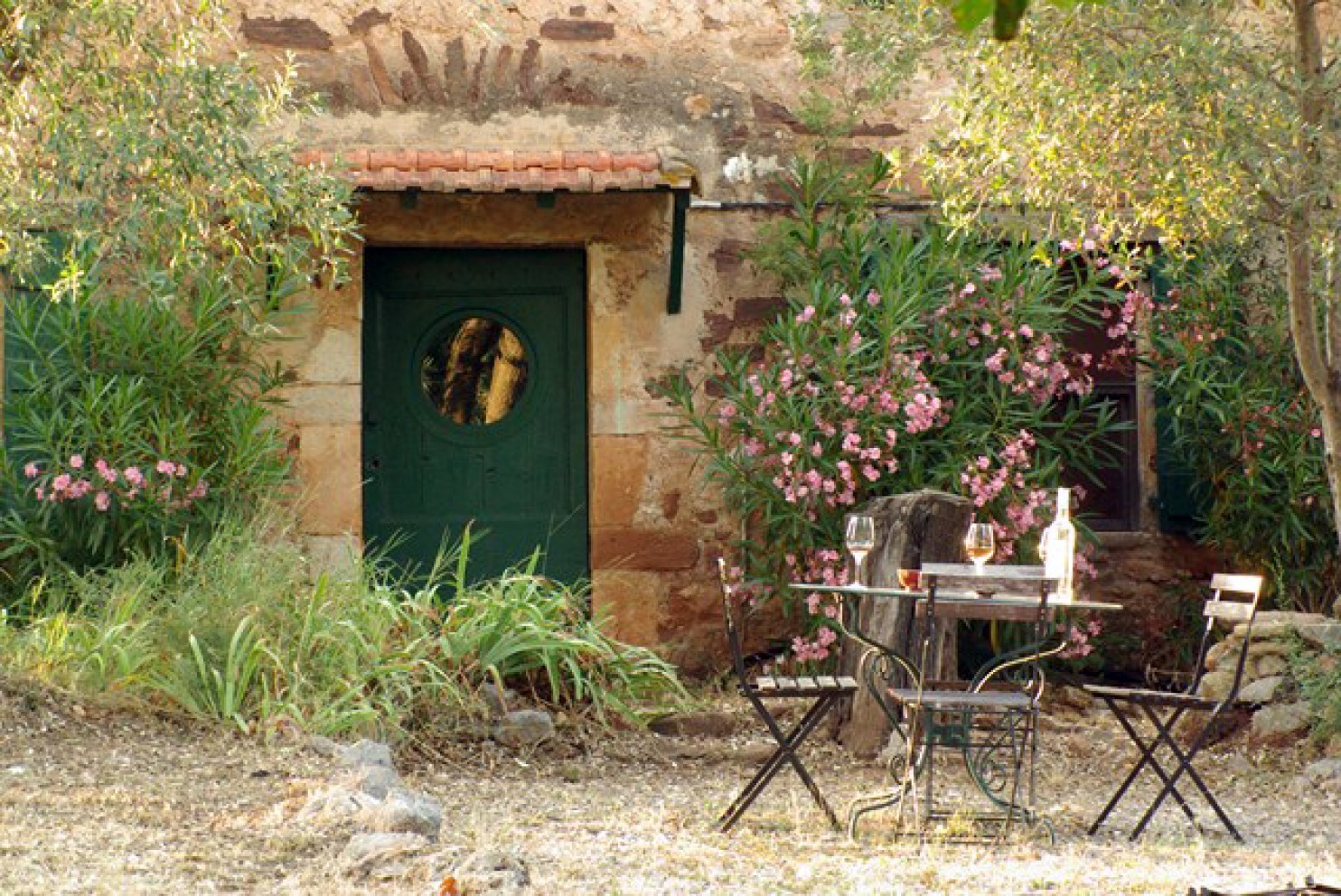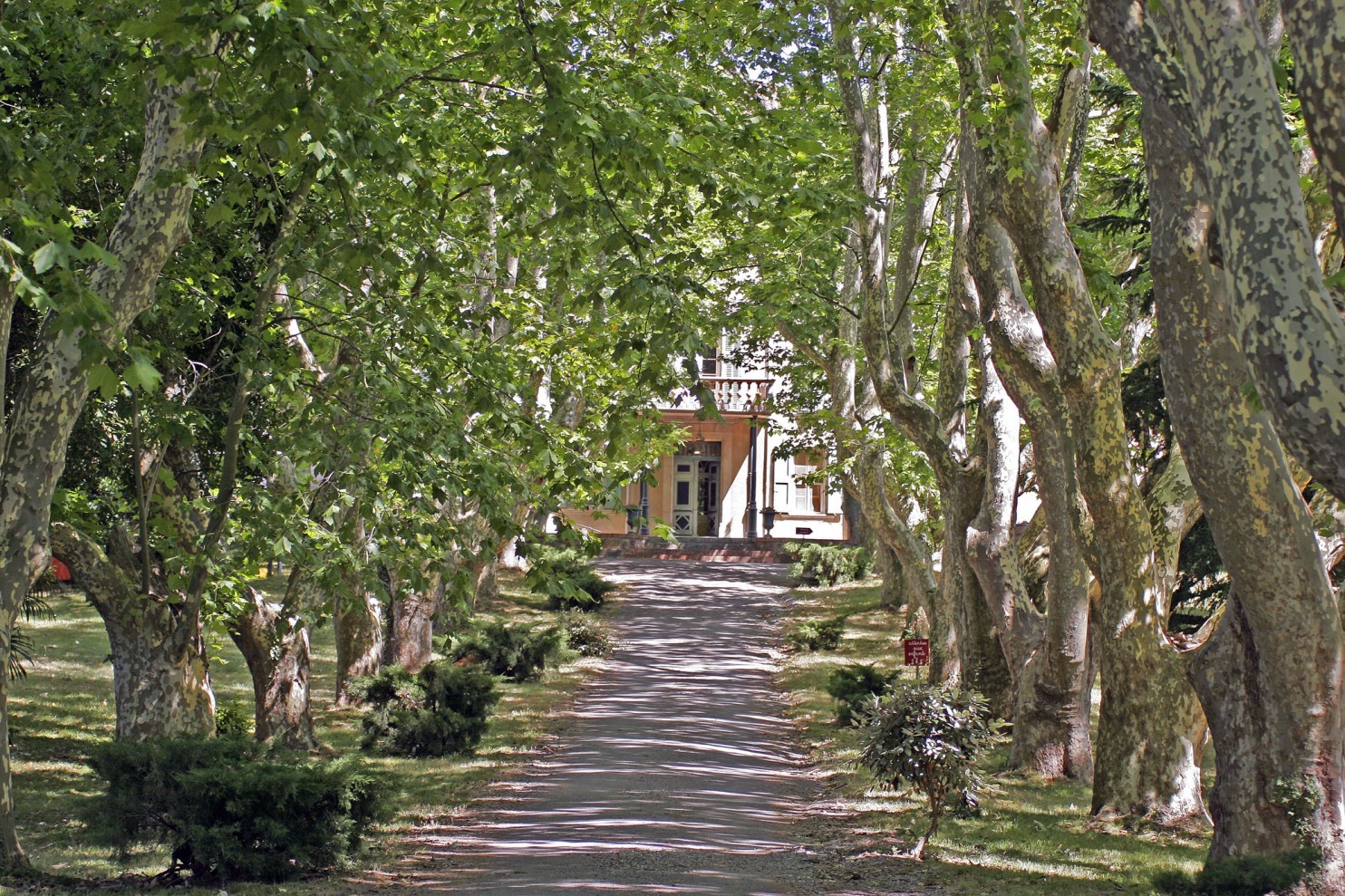When he couldn’t get his favorite Provence rosés, he changed careers

Robert Shive’s Allen Walker Collection imports a rosé by Domaine Saint Roman d'Esclans, whose vineyards stretch along a valley in the Côtes de Provence appellation. (Saint Roman d'Esclans)
In his 2006 book “Extremely Pale Rosé,” British writer Jamie Ivey romps across France in a wine-soaked search for the palest of pink wines. His quest reflects a belief among many wine lovers that the best rosés are ones with the least color.
[ Five wines to try this week. ]
Color is not a reliable indication of quality in a rosé, but it does reveal a style. Pale rosés tend to be bone dry, with bracing acidity and subtle flavors of watermelon, strawberry or rhubarb. Darker rosés are usually fruitier, sappy even, and often a bit sweet. Tavel, a region in the Rhone Valley of France, is known for its darker, almost vermilion rosés. But Provence is the spiritual homeland of rosé, its pale wines evoking sun-drenched Mediterranean beaches and village markets overflowing with produce. They have a dedicated following.
Those are the wines Robert Shive fell in love with on annual visits to St. Tropez for the resort city’s July 4 celebrations honoring the U.S. troops who liberated southern France during World War II. At outdoor cafes along the Côte d’Azur, Shive spotted bottles or carafes of pale pink wine on nearly every table.
Yet when he came home to the States, Shive couldn’t find wines that reminded him of St. Tropez. A mild-mannered retired Wall Street financial analyst now living in Idaho, he decided to embark on a second career, importing fine rosés from Provence.
“I’m the only guy I know who got into this business because he was mad,” Shive told me on a recent visit to Washington. “I couldn’t find good Provençal rosé here, except Domaines Ott. And that’s $40 a bottle, which leaves me out.”
The rosés Shive imports are considerably less expensive than $40, and their quality is exceptional. (And they’re better than Domaines Ott, which I’ve always felt was overrated.) The popularity of rosé in recent years has resulted in an explosion of pink wines on the market. That’s a good thing, but it means we must search harder to find those that are above average. Shive’s Allen Walker Collection (his and his son’s middle names) is a reliable quality marker on the label.
The wines were easy to find, though difficult to import at first. “From St. Tropez to Italy is about 90 miles, and at cafes and restaurants along the coast you will see the same 40 or so wines,” Shive says. He started visiting the producers, pleading with them to let him export their wines to the United States. After about a year, a few producers started to relent, sensing his seriousness, and probably also with an eye to the skyrocketing American demand for rosé.

Another of Shive’s producers in the south of France: Château des Garcinières, where the winemaker lets the rosé develop for a few months rather than bottle it as soon as the rules allow. (Château des Garcinières)
Shive now imports 11 wines, all rosés, most from the Côtes de Provence appellation. His producers don’t rush their wines to market, which means some of the 2014s are only just arriving in the States. “Côtes de Provence allows them to bottle as early as December 1,” Shive says, “but the wines aren’t really stable then, so producers have to add chemicals.” One of his producers, Château des Garcinières, is now selling its 2013 vintage; the winemaker prefers to let the wine develop, and it will drink well for at least two years after the vintage, Shive explained. Another, called Carpe Diem, isn’t bottled until late April. From the tank sample of the 2014 that Shive poured for me, the Carpe Diem was my favorite of his portfolio. It was unusually long for a rosé, with bright, sappy watermelon and raspberry flavors. It will be in stores later this month.
To enjoy these wines at their best, don’t drink them too cold. If the bottle has been in the refrigerator for a while, let it sit on the counter for about 20 minutes to take the chill off. Then there are two other ingredients you’ll need to supply: your deck or patio, and sunshine.